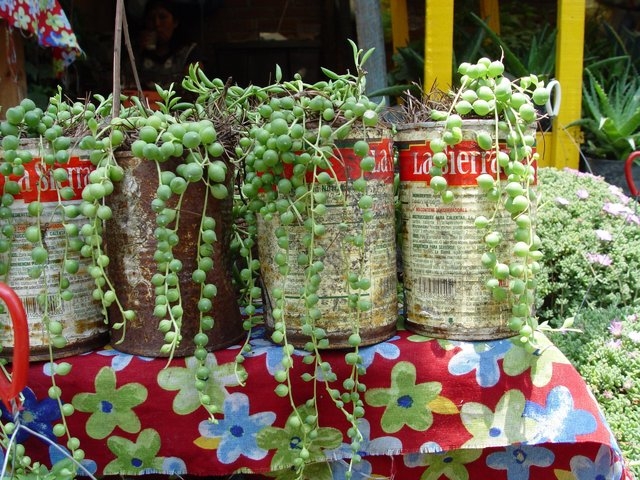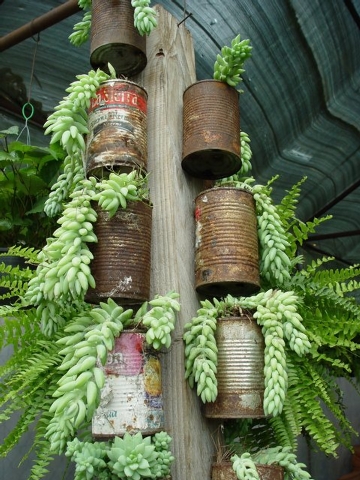Garden ‘gimmicks’ often present problems later on
Every day I troll through Pinterest to catch the latest and greatest gardening ideas. I gather the best in my Small Budget Gardening board, which has exceeded 6,000 vetted ideas I know will work well over time. It’s becoming a real crowd pleaser this summer.
As a tightwad gardening expert, I get really excited finding innovative money-saving ideas that look great and solve problems. Gardening should not be expensive, so repurposing old things and recycling cast-offs results in some truly innovative compositions.
But there’s a problem out there that I see every day. I call them “gimmicks” because they are ideas that don’t really work. Actually, they might work for a short time, and then problems crop up. One of my favorite examples of this is the repurposing of wood palettes into new handmade projects.
Pallets used as planters against walls is a popular vertical gardening idea. What they don’t tell you is anything that grows against a wall must be well-thought-out to prevent damage to the wall itself.
If we could look behind all those wall-mounted palettes, which by the way, require huge anchors to support such weight, there’s high damage potential to the vertical surface behind them. The plant and soil-packed palette never gets a chance to completely dry out. This creates the ideal environment for fungus, mildew, moss and moisture penetration with its residual staining, which can cause serious damage to masonry and building walls.
Earth-to-wood contact is never good, particularly with pine and other soft, fast-to-decompose woods used in pallets. I know this because I once made a walkway with the remnants from a walnut gun stock maker.
It looked great the first year, but after a winter the rot set in from the bottom up. Soon the wood split and shrank, discolored, and though once packed in tightly, they loosened up and became an unsafe walking surface. Though I could manage it, my 80-something mother cannot. This is why I cringe when I see ideas with palette wood or log rounds as paving because it will rot three times as fast as my walnut.
Another bad idea is containers for planting that don’t drain. Whenever you plant in a container there must be a drain hole, period.
Yet time after time I see mason jars or repurposed tea cups used for succulents, herbs and other plants. Without a drain hole the plants won’t live long because moisture inevitably accumulates in the bottom to displace oxygen in the root zone. Succulents don’t need much water, but the moment you water that undrained container, they’ll begin to rot like an overwatered house plant.
Other ill-conceived ideas are homemade fertilizers and pesticides. Many of these pest control recipes can be very effective, but the real problem is they lose their effectiveness quickly. This means you must reapply them often, sometimes daily, to maintain pest control over time.
There are dozens of recipes out there for homemade fertilizers, too. I always consider how much the raw materials cost to buy, and in most cases the ingredients add up to far more than the purchase price of organic fertilizer.
You may have to mix up a new batch of the recipe every time you feed, and if there’s any left over, it may not keep long enough to use again. When the recipes include things like beer, which attracts slugs and molasses that draws ants, you may find unexpected visitors are lured by the scent.
To find real money-saving gardening ideas on social networking sites and blogs, do your homework before diving in. Find out if that new idea is brilliant, or just a gimmick. Learn whether there are existing products that do a better job for less. When there’s little money to spend, don’t risk your summer garden harvest on someone’s good idea … that wasn’t.
Maureen Gilmer is an author, horticulturist and landscape designer. Learn more at www.MoPlants.com. Contact her at mogilmer@yahoo.com or P.O. Box 891, Morongo Valley, CA 92256.






























